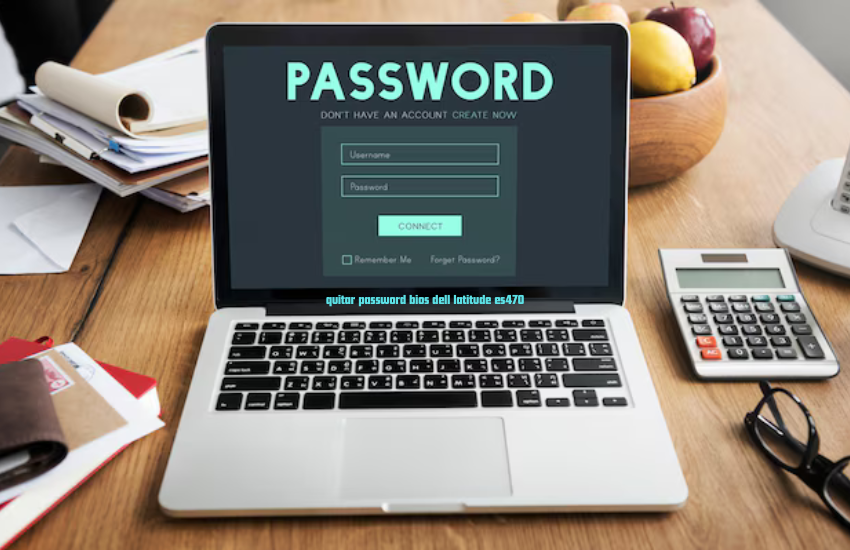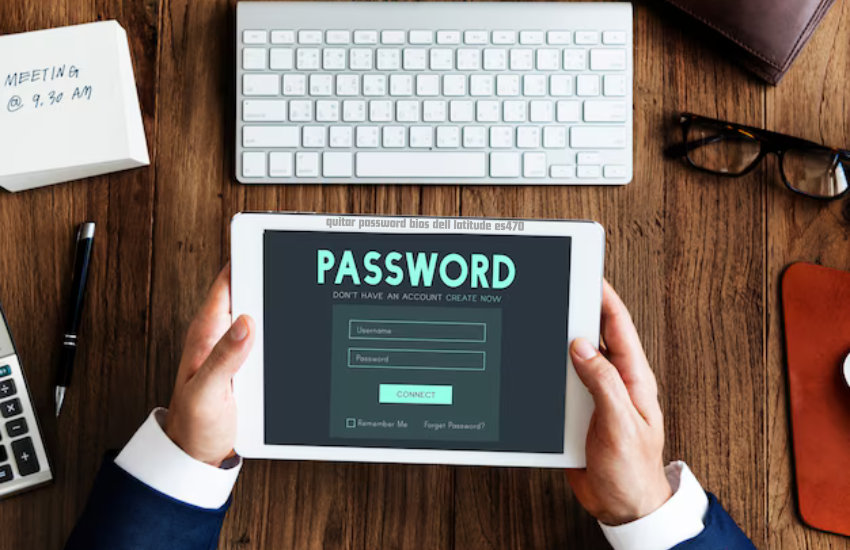Quitar password bios dell latitude es470

Understanding the Dell Latitude E5470
The quitar password bios dell latitude es470 is a robust business laptop known for its reliability, performance, and security features. It comes equipped with various security measures, including BIOS passwords, which help protect the device from unauthorized access. Familiarizing yourself with the device’s specifications and security features will aid in understanding the removal process.
Types of BIOS Passwords
Dell laptops typically feature two types of BIOS passwords:
- User Password: Restricts access to the BIOS settings.
- Supervisor Password: Provides full access to BIOS settings and can override user password restrictions. Understanding which password you need to remove is essential for following the correct procedure.
Precautions and Preparations
Before attempting to remove the BIOS password, ensure you have backed up all important data. Additionally, make sure the laptop is connected to a reliable power source to avoid interruptions during the process. It’s also crucial to understand the risks involved, such as potential data loss or hardware damage.

Methods to Remove BIOS Password
There are several methods to remove the BIOS password from a Dell Latitude E5470, including contacting Dell Support, using a backdoor password, and performing a hardware reset.
Contacting Dell Support
Dell Support can provide assistance with BIOS password removal. You will need to verify ownership of the laptop by providing the service tag and other relevant information. Depending on the situation, they may offer a master password or guide you through the reset process.
Using a Backdoor Password
Backdoor passwords are generic passwords set by manufacturers to allow access in case the primary password is forgotten. Here are common steps to use this method:
- Restart the laptop and access the BIOS by pressing F2 during startup.
- When prompted for the password, try entering common backdoor passwords such as “Dell”, “admin”, or “password”.
- If successful, you can access the BIOS settings and remove or change the password.
Hardware Reset Method
A more technical approach involves physically resetting the BIOS by manipulating the hardware components.
Accessing the Motherboard
To perform a hardware reset, you need to access the laptop’s motherboard. This involves:
- Powering off the laptop and disconnecting all cables.
- Removing the battery and any screws securing the bottom panel.
- Carefully opening the laptop to expose the motherboard.
Removing the CMOS Battery
The CMOS battery powers the BIOS firmware. Removing it will reset the BIOS settings, including the password:
- Locate the CMOS battery on the motherboard.
- Gently remove the battery and wait for a few minutes.
- Reinstall the battery and reassemble the laptop.
- Power on the laptop and check if the password has been cleared.
Using a Jumper to Reset BIOS
Some motherboards have a jumper that can reset the BIOS settings:
- Locate the BIOS reset jumper on the motherboard (refer to the laptop’s service manual).
- Move the jumper from the default position to the reset position.
- Wait for a few seconds, then move it back to the original position.
- Reassemble the laptop and power it on.
Reassembling the Laptop
After performing the hardware reset, ensure all components are properly reconnected. Test the laptop before securing all screws to confirm the password has been removed.
Post-Reset Procedures
Once the BIOS password is removed, you can enter the BIOS setup to configure necessary settings. It’s advisable to set a new, secure BIOS password to protect your system from unauthorized access.

Troubleshooting
If you encounter any issues during the BIOS password removal process, such as the password not clearing or hardware problems, consult the troubleshooting section. In some cases, seeking professional help may be necessary.
FAQs
- What if the backdoor password doesn’t work?
- If common backdoor passwords fail, you may need to try the hardware reset method or contact Dell Support for further assistance.
- Can I remove the BIOS password without opening the laptop?
- Using backdoor passwords or contacting Dell Support are methods that do not require opening the laptop.
- What should I do if I damage a component?
- If any hardware component is damaged during the process, seek professional repair services to avoid further issues.
- How to set a secure BIOS password?
- Use a combination of letters, numbers, and special characters to create a strong BIOS password.
- Are there any software tools for BIOS password removal?
- Some software tools claim to remove BIOS passwords, but their effectiveness and safety are not guaranteed. Hardware or manufacturer support methods are more reliable.
- What are the risks of removing the BIOS password myself?
- Risks include data loss, hardware damage, and voiding the laptop’s warranty. Proceed with caution and consider professional assistance if unsure.
Conclusion
Removing the BIOS password from a Dell Latitude E5470 involves several methods, each with its steps and precautions. By following this comprehensive guide, you can safely and effectively remove the BIOS password and regain access to your laptop’s settings. Always remember to back up your data and proceed carefully to avoid any potential issues.




